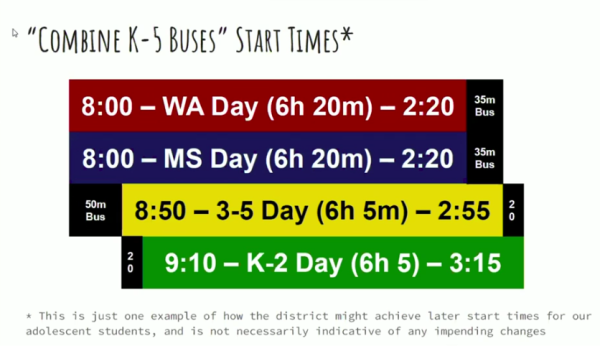WA cuts down on busywork
Senior Jun Hong does his homework in the library.
January 20, 2019
Amidst concerns raised by the Challenge Success program implemented in the Westford Public Schools system in recent years, Westford Public Schools made sweeping changes to the homework policy in grades K-12 at the beginning of the 2018-2019 school year.
Westford Academy implemented a new homework policy that restricts homework for CP and honors classes to 30 minutes per night and 4-5 hours per week for AP classes. At the middle school level, homework was capped at 90 minutes total per night.
This policy is the result of a two-year effort by the Homework Committee, a group of 27 administrators, faculty, students, and parents formed in 2016, based on reports from community members and the Challenge Success survey that homework levels were concerning. The survey indicated that 32 percent of students felt that “many or all” of their classes assign busywork.
The regulations, or specific restrictions, were drafted two years ago, and went through the approval process last year. The policy, which is more general, was put into place in October this year.
According to Assistant Superintendent of Curriculum and Instruction Dr. Kerry Clery, one of the key organizers of the initiative, the new policy emphasizes a focus on quality over quantity with the ultimate goal of increasing student engagement.
“So we just gave the times as a guideline, just something to shoot for. However, we don’t want that to be the focus, we want the focus to be the quality of the work so that students understand the purpose [of their homework],” she said.
The main focus of the new regulation is therefore to eliminate busy work from students’ lives, freeing up time that would otherwise be spent doing meaningless work in terms of understanding and applying concepts.
Under the new regulations, homework must fall into one of three categories: preparation, which could be watching a video or reading a textbook section before the lesson, practice, which reinforces concepts taught in class, and application, which presents concepts taught in class in unfamiliar ways to help students work on critical thinking skills.
There is a fine line between the ‘practice’ designation and busy work, says Clery, which is where the teacher’s own judgement comes in.
At the high-school level, homework should not exceed two hours per night in total. Clery explains that the expectation is that not all classes assign the maximum amount of homework every night in order to keep the daily workload manageable. The idea that homework was not mandatory nightly, and even discouraged, was the most surprising part of the new policy.
“There were teachers who were already doing that. There were some teachers who are have a hard time being comfortable with that. And then there were teachers who wanted to do that, but felt that they were supposed to, you know, assign homework every single night. So it’s interesting to watch the shift happen and how for some, it feels more natural for others, not so much,” she said.
Wendy Croteau, who teaches Honors Algebra II and CP Trigonometry and Pre-Calculus, has been going through her assignments and cutting out repetitive or less meaningful problems. When Croteau feels that problems are useful for practice or application but still too much of a weight to assign as homework, she assigns optional worksheets. This work may or may not fall inside the 30-minute margin, and does not count as assigned homework that is restricted by the new policy. It is up to the student’s judgement to do the right amount of preparation without overworking.
“I that [having the judgement] is something that comes with practice […] I don’t think that all students can do that yet,” Croteau said.
However, this restriction of having two hours of homework per night in total does not account for outside preparation and studying. Long-term projects such as papers and assigned studying, usually the night before a test, are included, but other non-homework preparation is not because it is difficult to quantify for every student.
“Especially at the Honors level, students are always looking for ‘what else can I do?’, ‘what else can I use to study?” Croteau said referring to her use of optional worksheets, though she makes an effort to limit the time sink on even non-assigned problems.
For many students, though the time limits themselves are manageable, the fact that many students spend much more time than teachers expect on schoolwork reduces the impact of the policy. A large component of workload-related stress is from studying, which often takes up several hours and is not counted as official homework.
Junior Jamie Laushine puts much more than the required time into homework every night. She cites more difficult tests in her junior year as opposed to previous years as a major reason why she spends so much time outside of class working, as well as the need to put in her best effort on homework that is often graded.
“I just feel like teachers expect a lot more work done — they don’t think it’s going to take a long time, but it really does, because you want to put in your best effort, obviously,” Laushine said.
Clery says studying and out-of-class preparation may be addressed by the Homework Committee in the future, but for now, they plan to assess the success of the policy as it stands.
Other nearby school districts continue to put an emphasis on quantity when it comes to homework regulations, and Westford Academy is fairly unique in making a shift towards quality.
“We felt like we were pioneers, in a way, to focus more heavily on quality. So I do think that as our word gets out there, that other districts will be asking us for ours [the policy] to use as a jumping-off point,” she said.
With the worrying results about homework levels reported in the 2015 Challenge Success Survey and a national awareness of student stress in the context of the modern day, Clery emphasizes the importance of making changes to accommodate changing student lives.
“This is only one tiny step, but it’s a step that matters,” she said.

















